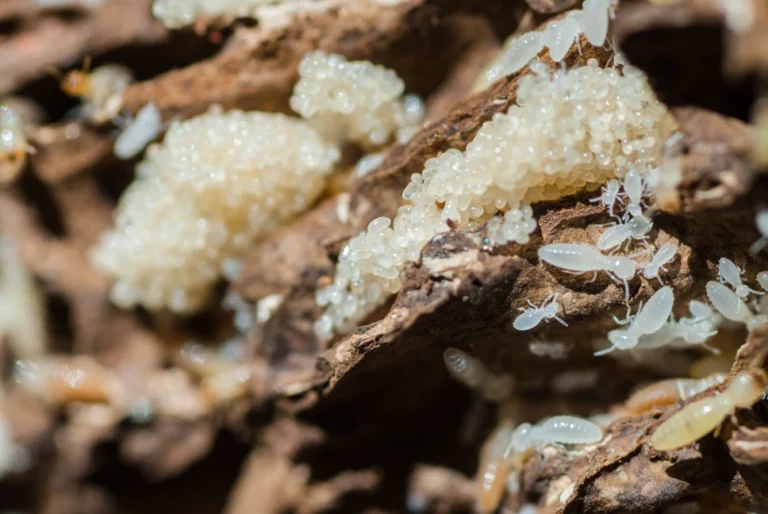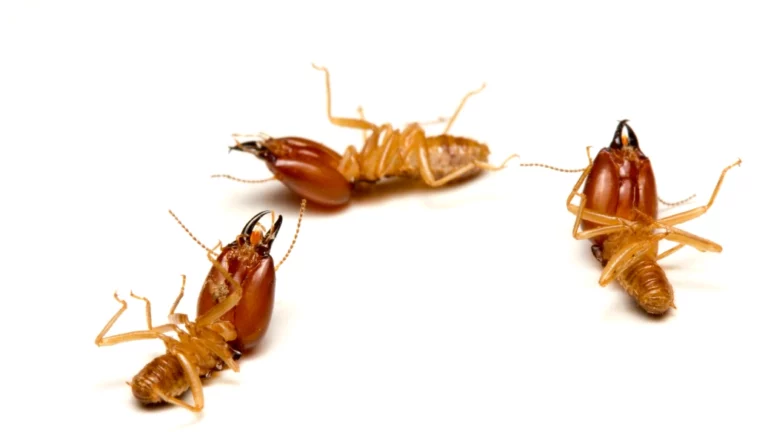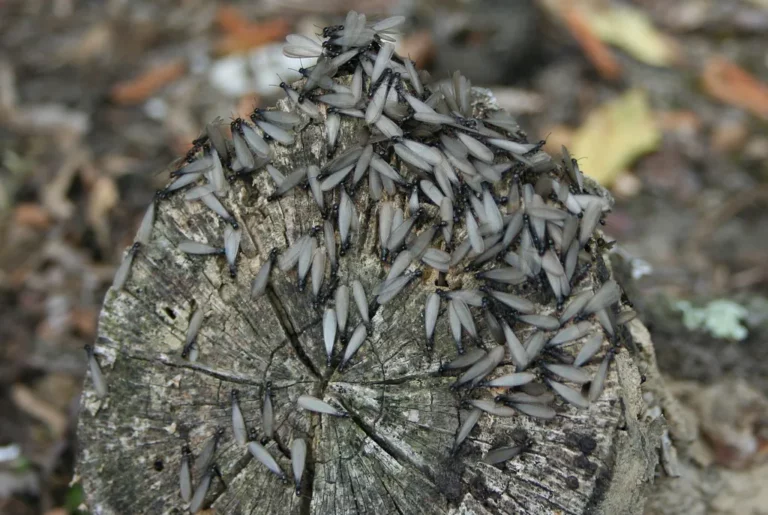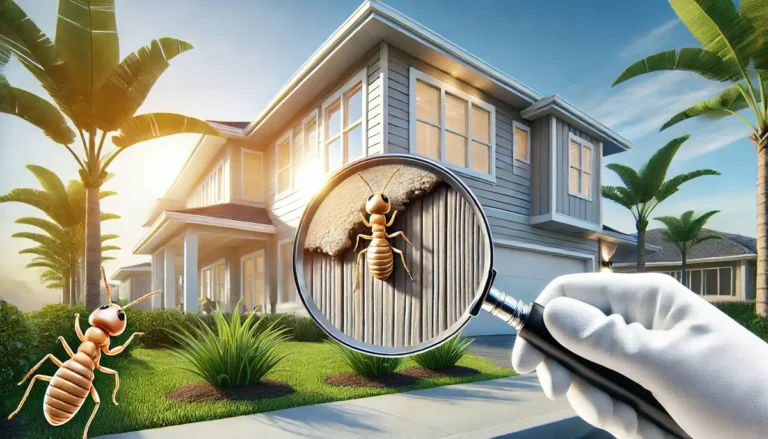Table of Contents
ToggleIf you suspect a termite problem, it’s crucial to seek assistance from a professional pest control company. Termite infestations and the resulting damage to homes costs homeowners around the country a whopping $5 billion every year. Termites damaging your home can be incredibly costly to fix and might not fit into your financial plan.
To keep termites at bay, it’s important to schedule a time for a termite inspection which is the most effective step. On Demand Pest Control provides free termite inspections to their customers. However, if the inspection is necessary for a real estate transaction, a fee will be applied.
We have a list of information on termite inspections. This ranges from the preparation required to the aspects inspectors observe.
Termite Inspection Cost
You can get a free termite inspection from On Demand Pest Control to see if your house has termites. If you’re buying or selling a house, and need a termite letter, you might have to pay $100 to $200. Checking for termites typically costs about $100, according to HomeAdvisor.
Signs You Need a Termite Inspection
If you see any of these signs – discolored drywall, live termites near your house, pinholes in drywall, discarded wings of termites, creaky floorboards, termite feces around your house, and visible wood damage on your house – you might need a professional termite inspection. This is especially true if you observe mud tubes, which are a sure sign of termite activity.
If you see signs of termites and are unsure of the cause, it’s best to schedule an inspection. During the inspection, the pest control expert will examine any signs of termite activity, determine the cause, and recommend a treatment plan. Keywords: sign of termite activity. Read on for additional information on the termite inspection process.
The Termite Inspection Process
To start the termite inspection process, simply schedule an appointment with your chosen company either online or over the phone. Make sure to arrange a time that works for you and a licensed technician. Please make sure you are available to provide access to your house, garage, and any other structures that require inspection.
When scheduling a visit from a company, it’s important to note that some providers may require preparatory measures. To ensure safety, it’s best to make sure the technician can easily access key areas of your home, such as the attic, sink, garage, and crawl space. Clear out your attic and remove any objects blocking your garage’s expansion joints. It’s also important to remove any items that may limit access to the opening of your crawl space or the space beneath your sink.
During the inspection, the technician will search your indoor and outdoor areas for signs of termite activity and infestation, like mud tubes and dropped wings. They will thoroughly search for both subterranean and drywood termites, scouring every corner and surface of your property. The time required to inspect your property will depend on its size and the accessibility of the wooden structures. Usually, the inspection takes about 45 minutes.
Once the inspection is completed, the technician will provide you with a detailed analysis of their discoveries. They will suggest methods to eradicate the wood-dwelling organisms and offer a cost estimate for necessary treatment.
What Termite Inspectors Look For
Termite inspectors look for certain signs that might show a termite problem. Some of these signs can be recognized by ordinary people, such as homeowners. It can be hard to spot termites in your house before they have already damaged your wooden structures significantly. Therefore, termite inspections are crucial for early detection and prevention of termite damage.
Mud Tubes
Mud tubes are constructed by subterranean termites to connect their nests with the wood they consume. The width of these muddy tunnels is about as thin as a regular pencil and is composed of soil and wood. These tunnels protect the termites from predators while keeping them from being dehydrated. Additionally, they link the soil with the wood source.
Subterranean termites can be identified through mud tubes, but the absence of these tubes doesn’t guarantee a termite-free environment. Drywood termites don’t create mud tubes, and subterranean termites may still be present without visible tubes.
Wood Damage
When you tap on your wood and it produces a hollow sound, this may indicate the presence of termites. These pests can cause significant harm to the structural joints of your wood, resulting in a rippled or crushed appearance. It’s possible to check for tunnels by examining the wood with a screwdriver. Subterranean termites have a unique approach to tunneling, always creating tunnels that run parallel to the grain of the wood.
Evidence of Swarms
As the temperature rises, subterranean termites take flight in search of a new location to establish their colony. During this migration, they shed their wings and sometimes leave them in piles.
Frass
Termites have a droppings that are called frass. These frass pellets are small and granular with an oval shape. You can usually find frass near baseboards, door frames, and windowsills if there is a presence of termites.
Buckling Paint
Subterranean termites can cause damage to your paint that may result in bubbling or peeling. These pests could damage drywall, which creates an opening for moisture and air to infiltrate between the paint and the surface. The moisture sitting below the painted surface can cause it to buckle over time.
Remember, paint bubbling may have various causes, so it’s not always a clear indication of termite presence.
Live Termites
It can be quite challenging to identify live termites since they are difficult to detect. However, if you happen to come across one in your home, it is essential to differentiate it from an ant.
There are three different types of subterranean termites: workers, soldiers, and reproductives, all of which have a similar creamy white appearance. However, one way to distinguish reproductives from the others is that they have wings, giving them a resemblance to flying ants. It can be difficult to distinguish between reproductive termites and flying ants, but there are some ways to tell them apart.
Termites and flying ants have wings. Termites have two pairs of wings, with one pair in the front and another pair in the back. On the other hand, flying ants also have two sets of wings, but their front wings are larger.
Unlike flying ants, termites have wings that are of equal length. Termites have more girth around the center than flying ants, with straight rather than curved antennae.
Key Areas to Inspect
When keeping your home safe, make sure to inspect significant areas other than the garage, attic, and crawl space.
Wooden Structures
Termites can pose a threat to outdoor wooden structures such as decks, sheds, carports, or arbors. If termite-resistant materials were not utilized during the construction phase, it is particularly important to be cautious.
Wood Fences
Termites can damage your wooden fencing and window sills. If you don’t take action, they may advance to your home.
Cracks
Termites can easily enter buildings through cracks in brick construction or expansion joints.
Deadwood
To prevent termite activity, it’s important to remove any fallen tree branches in your yard. Don’t leave them lying around, instead dispose of them immediately to ensure the safety of your property.
Firewood
If you have firewood stored for cozy nights, keep in mind that these piles can be attractive to termites depending on your location. To keep firewood safe, ensure it is elevated and at least 20 feet away from your house.
Wood Mulch
Using wood in mulches may attract termites, which can cause damage to your garden. If you suspect a termite infestation, you should consider using a different type of mulch.
Calling in the Professional Home Inspectors
If you suspect termite activity in your home, it’s essential to contact a top-rated pest control company for termite control. On Demand Pest Control offer excellent termite control services, thanks to their skilled technicians with great expertise. Their termite control service is the best you can get.
You can expect the same process whether you inspect for termites on your own or hire a pest control company. It’s essential to get it done, regardless of which option you choose, to prevent your home from becoming a termite buffet.




